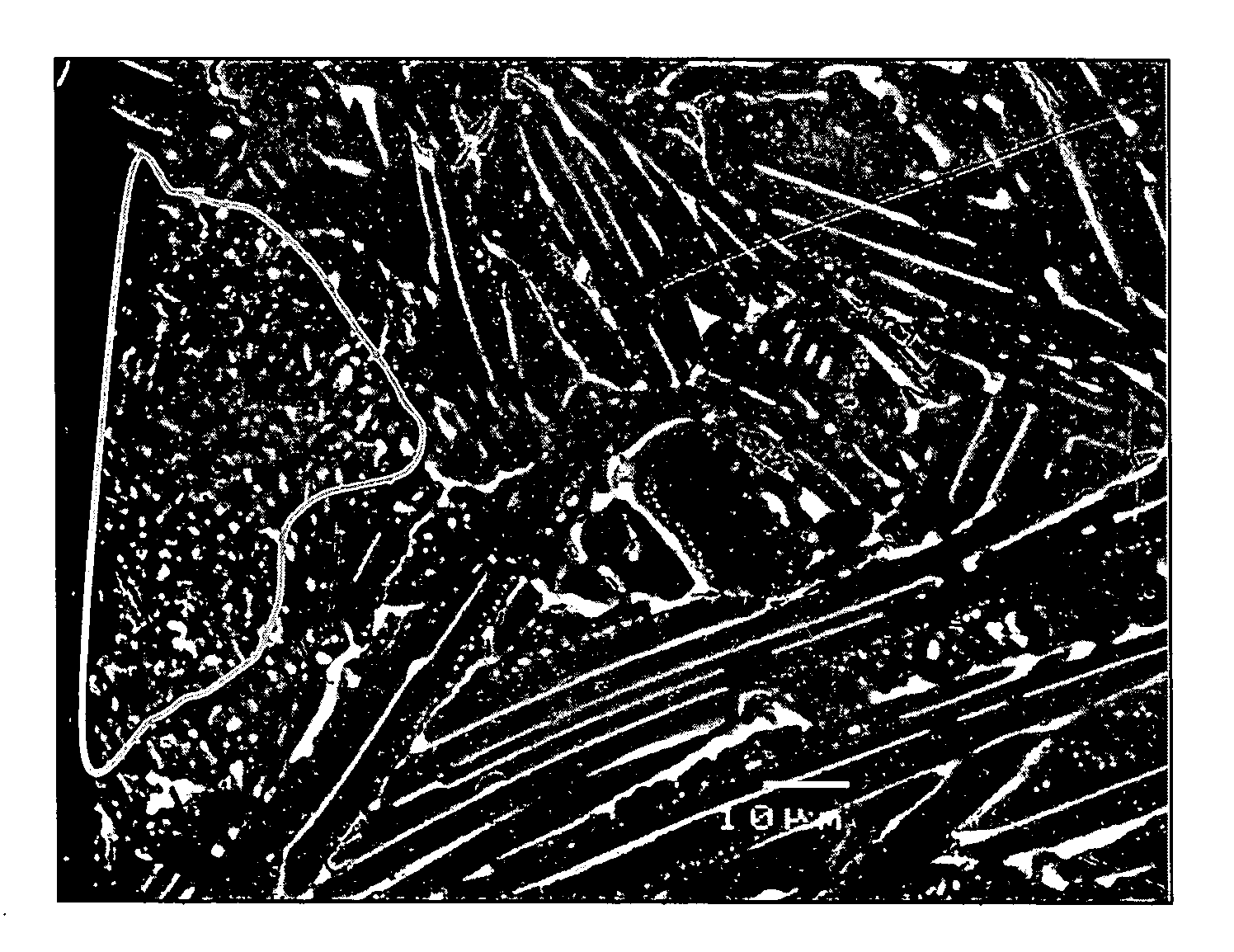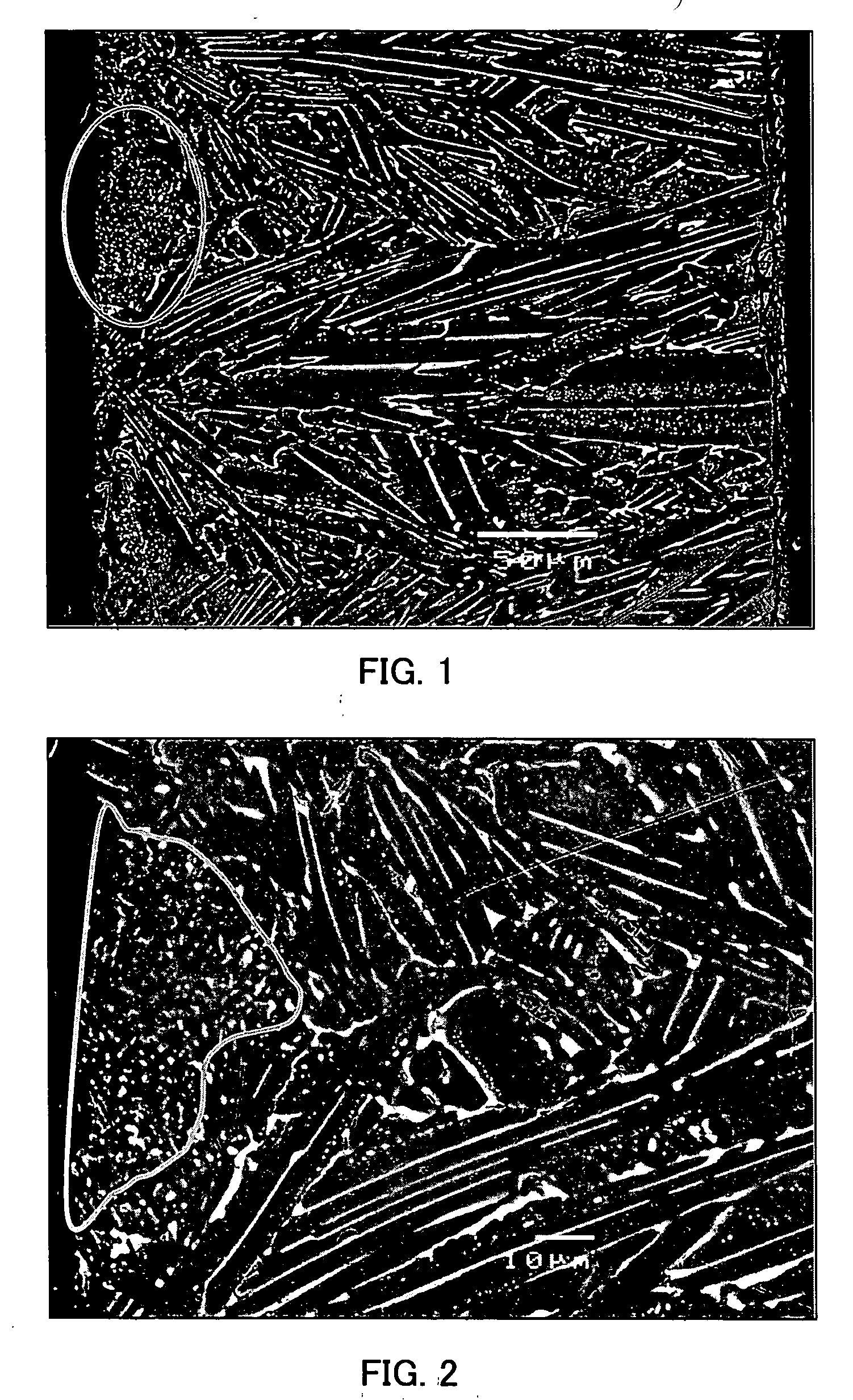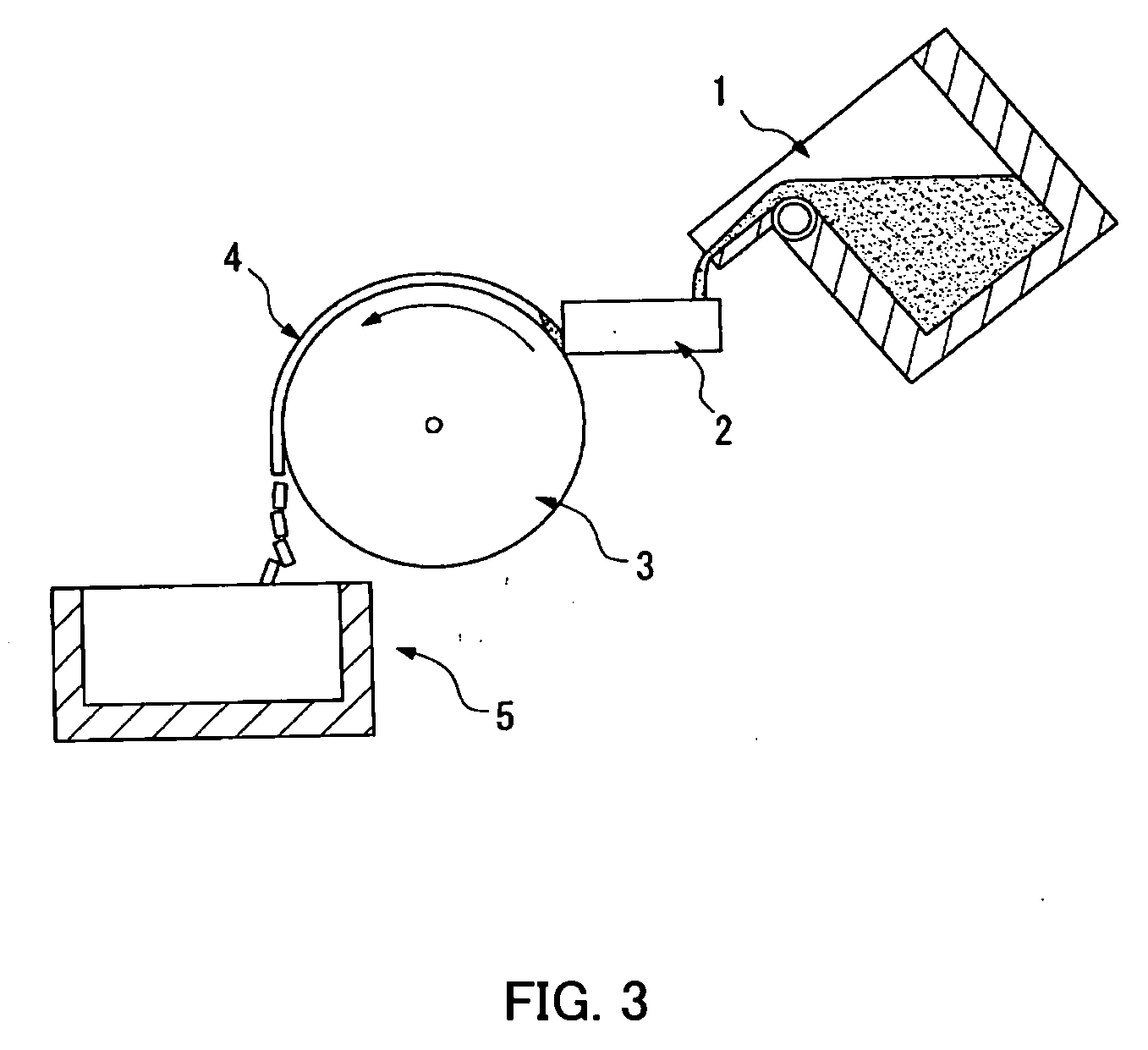R-T-B type alloy, production method of R-T-B type alloy flake, fine powder for R-T-B type rare earth permanent magnet, and R-T-B type rare earth permanent magnet
- Summary
- Abstract
- Description
- Claims
- Application Information
AI Technical Summary
Benefits of technology
Problems solved by technology
Method used
Image
Examples
example 1
[0086] Raw materials of metallic neodymium, metallic dysprosium, ferroboron, cobalt, aluminum, copper and iron were provided to give an alloy composition comprising, in terms of weight ratio, 22% of Nd, 9% of Dy, 0.95% of B, 1% of Co, 0.3% of Al and 0.1% of Cu, with the balance being Fe. The raw materials were melted in an alumina crucible in an argon gas atmosphere at 1 atm by using a high-frequency melting furnace, and the molten alloy was cast by the SC method to produce an alloy flake.
[0087] The rotating roll for casting had a diameter of 600 mm and was made of an alloy obtained by mixing slight amounts of Cr and Zr with copper, and the inside thereof was water-cooled. The peripheral velocity of the roll at the casting was 1.3 m / sec, the average molten alloy supply rate to the casting roll was 28 g / sec per 1-cm width, and the average temperature of the alloy on separating from the casting roll was measured by a radiation thermometer and found to be 890° C. In the measured value...
example 2
[0095] Metallic neodymium, metallic praseodymium, ferroboron, cobalt, aluminum, copper and iron were blended to give an alloy composition comprising, in terms of weight ratio, 26.0% of Nd, 5.0% of Pr, 0.95% of B, 1.0% of Co, 0.3% of Al and 0.1% of Cu, with the balance being Fe. Melting and casting were performed by the SC method in the same manner as in Example 1. However, the peripheral velocity of the roll at the casting was 1.3 m / sec, the average molten alloy supply rate to the casting roll was 28 g / sec per 1-cm width, the average temperature of the alloy on separating from the casting roll, measured by a radiation thermometer, was 850° C., and the difference between the maximum temperature and the minimum temperature of the measured values was 20° C. Since the melting point of the R2T14B phase of this alloy is about 1,140° C., the difference from the average separation temperature is 290° C. Also, the average cooling rate of the R-T-B type alloy on the casting roll was 1,060° C....
example 3
[0102] The alloy flake obtained in Example 1 was subjected to hydrogen cracking and pulverization by a jet mill. The conditions in the hydrogen absorption step as the pre-step of the hydrogen cracking step were a 100% hydrogen atmosphere, a pressure of 2 atm, and a holding time of 1 hour. The temperature of the metal strip at the initiation of a hydrogen absorption reaction was 25° C. The conditions in the dehydrogenation step as the post-step were an in-vacuum atmosphere of 0.133 hPa, 500° C. and a holding time of 1 hour. Subsequently, 0.07 mass % of a zinc stearate powder was added to the powder obtained above, and the resulting powder was thoroughly mixed by a V-type blender in a 100% nitrogen atmosphere and then pulverized by a jet mill. The atmosphere at the grinding was a nitrogen atmosphere having mixed therein 4,000 ppm of oxygen. Thereafter, the powder was again thoroughly mixed by a V-type blender in a 100% nitrogen atmosphere. The oxygen concentration in the obtained powd...
PUM
| Property | Measurement | Unit |
|---|---|---|
| Temperature | aaaaa | aaaaa |
| Fraction | aaaaa | aaaaa |
| Fraction | aaaaa | aaaaa |
Abstract
Description
Claims
Application Information
 Login to View More
Login to View More - R&D
- Intellectual Property
- Life Sciences
- Materials
- Tech Scout
- Unparalleled Data Quality
- Higher Quality Content
- 60% Fewer Hallucinations
Browse by: Latest US Patents, China's latest patents, Technical Efficacy Thesaurus, Application Domain, Technology Topic, Popular Technical Reports.
© 2025 PatSnap. All rights reserved.Legal|Privacy policy|Modern Slavery Act Transparency Statement|Sitemap|About US| Contact US: help@patsnap.com



